Marxist Witches of South Africa
Dan Roodt, American Renaissance, June 11, 2020
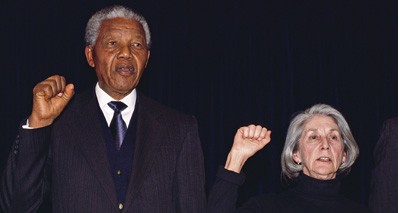
One of the strangest aspects of the current Afro-centrc system in South Africa is the role reserved in government for radicalized white women. The state bureaucracy has been almost entirely cleansed of white men over the last quarter century of ANC rule. However, highly educated white women, often with Ph.D.’s, enjoy considerable power, much like influential courtesans like Madame de Pompadour in the days of European aristocratic rule.
Many departments of the central and provincial governments have at least one powerful white female bureaucrat who goes out of her way to implement the ANC’s often crazy policies, while her black boss spends his days lounging in five-star hotels, as he works the byzantine system of African politics that requires constant socializing. Similar women run left-wing NGOs funded by European or North American governments. Some have such clout that they do not hesitate to dictate to the ANC’s politicians what must be done to further the “progressive” agenda.
Perhaps the most typical case of such a left-wing white woman is Prof. Ruth Hall, who is agitating for the nationalization of all farmland in South Africa. Prof. Hall is pushing the president of South Africa, Cyril Ramaphosa, into adopting even more radical anti-white policies than he has hitherto been prepared to countenance. In the photograph below, President Ramaphosa is surrounded by his “advisory panel on land reform.”
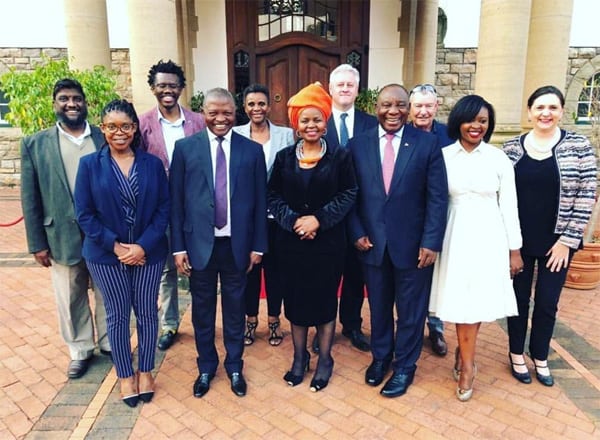
Mr. Ramaphosa is standing in the front, third from the right. There are only three whites in the picture. The men are Dan Kriek of the country’s biggest farmers’ union, AgriSA, second from right at the back, and Nick Serfontein, a major cattle farmer. They have no influence on the panel, and their “expert” views are routinely disregarded. The most influential member of the panel, Ruth Hall, is on the right. Holding a Ph.D. in politics from Oxford, with dozens of quasi-Marxist articles in academic journals to her name, she may be called the chief ideologue of the government panel. Most other members of the panel — typical of government bodies in South Africa — enjoy catered lunches, talk a bit, and then do nothing. But Ruth Hall writes reports and memos, pushing everyone towards a “land revolution” in which white, mostly Afrikaner, farmers would lose their land, and the country would lose its food security, much as happened in Zimbabwe.
In this video, tweeted by a local news outlet, Ruth Hall explains with amazing confidence how “the panel” (meaning her) will “advise ten government ministers” on what to do.
Ruth Hall talks about the panel tasked with advising President Cyril Ramaphosa on land reform. pic.twitter.com/5yyhBJJhNS
— Times LIVE (@TimesLIVE) September 21, 2018
South Africa’s universities have also been ethnically cleansed of whites, with the exception of white women loyal to the ANC regime. Not only is Hall a professor at the University of the Western Cape (the university for “Coloreds” or mixed-race people under the old system), but she is also the public face and media spokesman for a radical NGO, the so-called Institute for Poverty, Land and Agrarian Studies or PLAAS. The acronym “PLAAS” is ironic, because it is the Afrikaans word for “farm,” and the institute’s stated intention is to replace every family-owned “plaas” or commercial farm in South Africa with an Africanized version of the Soviet kolkhoz, a collective farm.
Land ownership will largely revert to the state, with African peasants settled on the land in an attempt to replicate the disastrous ujamaa socialism of former President Julius Nyerere of Tanzania in the 1970s and early 1980s. Despite getting $10 billion in handouts from the Scandinavian countries, Tanzania’s GDP halved during the ujamaa period under Nyerere’s rule from 1967 to 1975. According to a Swedish report, Sweden alone donated $7 billion to Tanzania from 1960 to 2013.
As did Ruth Hall, the director of PLAAS, Andries du Toit, studied in Britain under the famous Argentinian Marxist, Ernesto Laclau at the University of Essex. Once vilified as a racist, reactionary country in the period after World War II, South Africa has now become arguably the most left-wing country in the English-speaking world. The country with which we enjoy the most cordial diplomatic relations is Cuba. The last outpost of communism in the Caribbean sends us doctors and nurses, for whom we fork out millions of dollars, while own medical personnel cannot find jobs even in the midst of the coronavirus pandemic.
In addition to funding South Africa’s entire AIDS treatment program, the United States recently donated $41.6 million dollars to “assist in our Covid-19 response.” The ANC regime immediately sent an equivalent amount of money to Cuba, in exchange for 200 Spanish-speaking doctors and nurses.
US Secretary of State Mike Pompeo responded to the news during a Washington briefing by saying, “Governments accepting Cuban doctors must pay them directly; otherwise when they pay the regime, they are helping the Cuban government turn a profit on human trafficking.”
However, popular Afrikaans novelist, Marita van der Vyfer, says Cuba is the last remaining place “where communism is sexy.” She said this in an interview with the women’s magazine Sarie on her latest novel, Grensgeval (published by Penguin in South Africa), which deals with the South African-Angolan war, but from a Cuban perspective. During her research for the novel, she made a trip to Fidel Castro’s island. Here is what Miss van der Vyfer said (my translation):
But it is difficult not to be seduced by Cuba once you are there, because there is the music and there is the rum and cigars. Aged grannies smoke cigars this thick and they live to the age of 100. I don’t know how they manage it. The women shake their hips to the music. The women are sensual. I almost feel it is the last place on earth where communism is sexy.
Cuban communism is “sexed up” with South African taxpayer funds. Even apart from the medical racket run by Cuba, which includes university courses for South African blacks in Havana, all paid for in hard currency, we have also made intergovernmental loans to our Marxist brothers in the Caribbean. In recent years, South Africa has been downgraded to junk status by both Moody’s and Standard and Poor’s, but our credit rating is still a few notches above that of Cuba. So, the chances of the rum-drinking, cigar-smoking Cubans ever paying us back are virtually zero. In essence, we are subsidizing the regime in Havana, while the US and the EU subsidize the ANC regime.
Miss van der Vyfer made her mark by publishing “chick lit” in Afrikaans, usually with Cape Town as the setting. She married a Frenchman and lives in a town in southern France, so she is not subject to the vagaries of Marxist rule, neither in Cuba nor in South Africa. She visits us only on book tours. Probably she is not much of a communist either, but she knows that any novel singing the praises of Cuba and running down the old South African army will be lapped up by the mainstream media, both here and overseas. Hence her literary pilgrimage to the last bastion of Marx and Lenin.
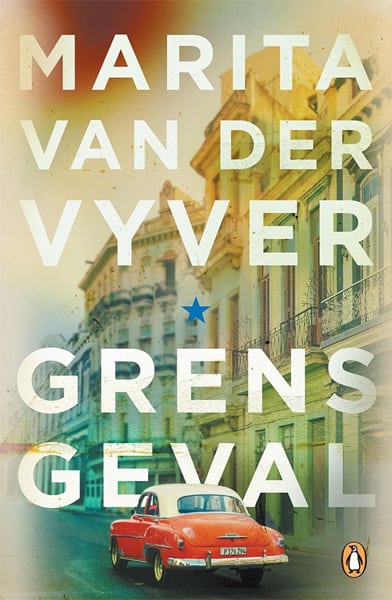
Barbara Dallas Creecy is the only white member of our cabinet. This is a real feat, since South Africa is arguably the most anti-white country in the world, except maybe Zimbabwe. I was at university with Barbara Creecy, although I cannot recall taking any classes with her. She started out as a liberal or “Young Prog,” as they were then called, named after Helen Suzman’s Progressive Party. I remember a speech she gave as a student politician during which she exclaimed in a shrill voice: “I’m not a polemicist!” But like many liberals, she drifted into hardcore Marxism, without which she would never have climbed the ladder of success within the ANC.
During her tenure as provincial minister of education in the Gauteng province, home to Johannesburg and Pretoria, she launched a campaign against Afrikaans-language schools because they were “not sufficiently integrated.” Her campaign was even more zealously pursued by her successor, a resolutely anti-white black named Panyaza Lesufi.
Miss Creecy was educated at a posh private school with British links, Roedean, so even if she abolished all the Afrikaans public schools, her old school would survive. In fact, a number of radicalized, English-speaking South African women have attended private Anglican or Catholic schools, where they absorb internationalist, left-wing values and avoid having to mingle with ordinary middle-class whites. The white ANC terrorist Shirley Gunn, about whom more below, said that attending a Catholic private school and not being exposed to “Christian-national education” in government schools under our ancien regime “set her on the right path,” which took her to the Soviet Union, East Germany, and Cuba for training in terrorism, sabotage, weapons handling, and explosives.
Before 1994, “Christian-National Education” got the demon treatment from the South African Left, and many academic articles were published about its evils, especially school prayer and military bands with marching for boys. The system also included Domestic Science as a subject for girls, in which they learned such unfeminist activities as sewing and cooking.
Another woman of the same type, Barbara Hogan, served briefly as a minister of health from September 2008 to May 2009, after which she stayed on until October 2010 as minister of public enterprises. The reason Miss Hogan was appointed at all was probably that she had been an underground member of the ANC and was sentenced to 10 years imprisonment for high treason by the old South African government, the first South African woman to have obtained such a distinction. She was released in 1990, and her fame extended to the USA, where the University of Kentucky gave her an honorary doctorate in 2011, along with her “life partner,” Ahmed Kathrada.
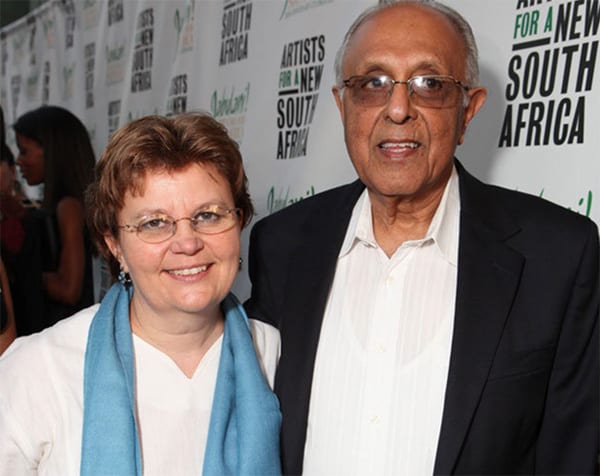
Barbara Hogan and Ahmed Kathrada
Mr. Kathrada, a Muslim Indian, was accused along with Nelson Mandela in 1964 during the notorious Rivonia Trial, and he also served a “life sentence” on Robben Island until his release in 1990. Before joining the ANC’s underground military wing, he had been active in the so-called Transvaal Indian Youth Congress, attending an international youth conference in East Berlin in 1951. After that, he spent time in the former Warsaw Pact countries, before returning to South Africa.
In her youth, Barbara Hogan was a member of the tight-knit group of Marxist students and activists on the campus of the University of the Witwatersrand in Johannesburg, where I myself had spent fruitless years imbibing left-wing doctrine and accumulating various Arts degrees. I remember seeing her almost every morning in the student cafeteria, engrossed in some Marxist treatise or reading the radical black newspaper The World, which was banned by the old South African government in 1977. Witwatersrand was such a nest of hoydenish Marxists that I have taken to calling them the Wits ladies.
Miss Hogan also went to Catholic high school: St. Dominic’s Convent School, but a heartening exception to this plague of Catholic Marxists is Mrs. Gaye Derby-Lewis. She is one of South Africa’s most famous personalities on the right, who also had a Catholic upbringing, but in Australia. The Johannesburg Sunday Times once condescendingly described her as “a former Australian nun who came to South Africa, ran a gay bar in one of the seediest parts of Johannesburg and worked on the Conservative Party mouthpiece Die Patriot.” Her husband, Clive Derby-Lewis, was given a life sentence in the ANC regime’s prisons for his part in the assassination of the radical black communist, Chris Hani, and was released only on medical parole when he developed terminal cancer. Mrs. Derby-Lewis is still very much alive and — I might add — an avid reader of American Renaissance.
She learned Afrikaans in South Africa, and as an aide in the old government, she took Henry Kissinger around during his visit to South Africa in the 1970s. When the National Party split in 1982, she and her husband ended up in the Conservative Party, which was fighting against a handover of power to the Marxist ANC and SA Communist Party. She is also a brilliant and witty writer, quite the opposite of a Marxist or feminist virago.
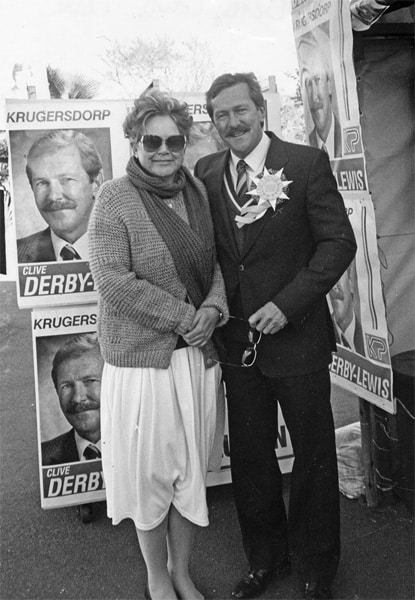
Gaye and Clive Derby-Lewis on the campaign trail for the Conservative Party in Krugersdorp, west of Johannesburg.
Shirley Gunn once almost bombed Mrs. Derby-Lewis to death by putting an explosive in the lobby of a hall in Cape Town, where Mr. and Mrs. Derby-Lewis were trying to penetrate that liberal stronghold by organizing a political meeting. In her autobiography, Voices From The Underground (Penguin Random House 2019), Miss Gunn’s account is instructive:
Another operation was in response to the planned launch of a Conservative Party (CP) branch in Sea Point on 16 June 1988, the anniversary of the student uprisings. Their public launch was held in the main hall of the Sea Point Civic Centre on Main Road. Diagonally opposite the civic centre was a restaurant on Glengariff Road, where Aneez and I drank coffee and observed activity around the civic centre. The lights were on inside and there was no foot traffic; the meeting was in progress. I was to execute the operation. Aneez went back to Clifton to monitor the news.
My plan was to approach the civic centre from the flats behind the chemist on Glengariff Road, where I would prime the limpet mine. I would place the limpet against the glass façade of the civic centre, then leave the same way, exiting via the back entrance of the flats in order to catch a taxi on Main Road back to our base in Clifton.
It was not that straightforward. It was a misty winter night and I was wearing a hand-knitted jersey to which I’d added an extended polo neck that I could pull over my head like a hood. Everything seemed to be going according to plan, but then, as I was approaching the civic centre with the charge ready, a white woman – Gaye Derby-Lewis, I later discovered on the news – left the main building and entered the minor hall. I turned my back to her and waited to see what she was up to. She walked out of the minor hall and back into the main building, and then came out again with two men, entered the minor hall again and exited, carrying chairs to the main building. I waited a while longer, hoping they were not coming to fetch more chairs and, when it was clear, I dashed through the flowerbed and placed the charge facing the glass façade. I disappeared back into the flats, whipped off the jersey, exited through the back entrance and jumped into a taxi. According to news reports, the explosion shattered the glass while the CP members were singing Die Stem, apartheid South Africa’s national anthem. This must have been a shock to them, and the expansion of the CP was abruptly stopped there.
Terrorism works, as they say. The ANC had been successful in intimidating both blacks and whites into supporting it during the late ’80s and early ’90s. If going to a Conservative Party meeting was enough to get you bombed, middle-class whites might hesitate to support the party. Nevertheless, one of the reasons FW de Klerk was keen to surrender to the ANC was that he feared an electoral loss against the Conservative Party, which was gaining momentum as the true defenders of white interests in South Africa.
But what turned Shirley Gunn, who grew up in a normal middle-class home in Cape Town with a radiologist father and a nursing-sister mother, into a Marxist terrorist? White South African identity is a complex issue, and the language divide between Afrikaners and English-speakers constitutes our Mason-Dixon Line. Recently, I interviewed an Afrikaner man who had visited 56 British concentration-camp sites in South Africa where 34,000 Boer women and children had died under atrocious conditions during 1900–1902. In the middle of the interview, tears were streaming down his face. As William Faulkner wrote: “The past is never dead. It’s not even past.”
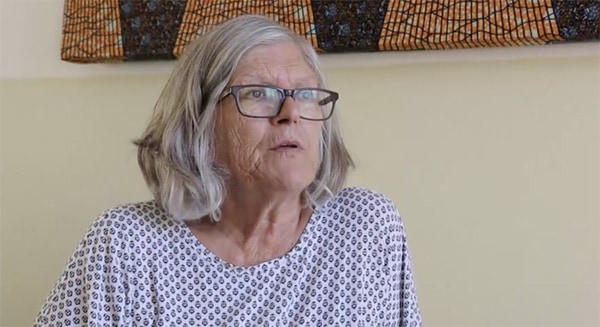
Shirley Gunn
Shirley Gunn is only a second-generation South African — her father was born in Egypt — and she did not make the same passionate connection with the country as her fellow Catholic, Gaye Derby-Lewis. Miss Gunn rejected the identity of white South Africans as expressed by Die Stem, that roaring ode to the South African landscape and our pioneering history — and known as “the apartheid anthem.”
In her quest for a new identity, she found Marxist revolution and “liberating the poor.” She rejected the West and espoused the cause of the Third World, ending up not only in Cuban and East German training camps, but also in what she calls a “mixed-race relationship” with a Cape Muslim, Aneez Salie. In fact, she even used her interracial relationship as a kind of “cover” with liberal Capetonians from whom she rented accommodation, making them believe that her secrecy and nocturnal movements — during which she planned and carried bombings — were because she had to hide her dark lover in a race-conscious society. She is now part of the multicultural wave that has already laid the West low in South Africa and will do so next in the USA, Canada, and Western Europe.
Miss Gunn thought that Cuba was not feminist enough for her. The alliance of feminism and Marxism is strong in South Africa, especially in the media and at universities. A whole new generation of white feminist Marxists or Marxist feminists has come to the fore, advocating a second phase of the revolution that would remove white men from their last remaining positions of power and influence altogether. Such a revolution would finally destroy the “white patriarchy.”
But let us move on to the mother of the revolution, Ruth First. She did not attend a private Catholic school but a government school. However, she belonged to South Africa’s Jewish minority and was almost born a communist. Her parents, Julius First and Matilda Levetan, emigrated to South Africa from Latvia in 1906, becoming founding members of the Communist Party of South Africa (CPSA), forerunner of the current South African Communist Party (SACP). First was born in 1925, attended Jeppe Girls High School, and graduated from Witwatersrand University in 1946. She married a militant trade unionist, Joe Slovo (born Yossel Mashel Slovo in Lithuania) who attended the same university. Together, they became the soul of the anti-South African movement, with Joe taking over as commander of the ANC and SACP’s underground terrorist group known as Umkhonto we Sizwe while she operated as a publicist and propagandist in London.
Another leftist woman with a Lithuanian-Jewish background, Nobel-prize winning author Nadine Gordimer, played a key role in influencing the prime minister of Sweden, Olof Palme, to fund the ANC’s campaign of terror and propaganda against South Africa. While researching First, I came across an article, “The Jewish Women Who Worked Alongside Mandela,” that mentions Ruth First, Nadine Gordimer, and Progressive Party member of parliament Helen Suzman as the three most influential women in the movement to build the current system.
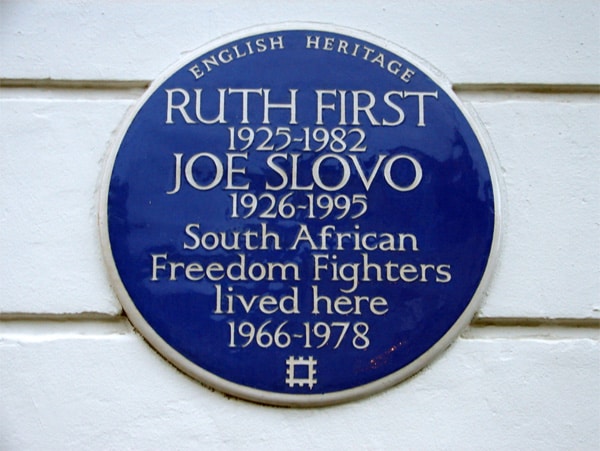
Plaque in Camden Town, London, for the Slovos
Like First, Gordimer was definitely a species of Marxist. Although she never completed her undergraduate studies, she also attended that breeding ground for leftists, Witwatersrand. She lived only a stone’s throw from the university in a large home in the posh suburb of Parktown. As an undergraduate, I and a fellow student once interviewed her for our campus newspaper. She treated us like “youthful morons.” A few years later, I sparred with her at a writers’ conference, also at the University of the Witwatersrand, on the subject of Claude Lévi-Strauss. She clearly did not understand him, but she was the kind of pseudo-intellectual who could pass herself off as a sage, quoting Gramsci and other neo-Marxists. Leftist America and Britain loved her, as did the Swedes. So, her 1991 Nobel prize was almost a certainty.
Although of Jewish origin, Gordimer was an atheist Marxist who attended a convent school. Or at least that is what the Nobel Prize website tells us.
Helen Suzman (née Gavronsky) never quoted Marx or Lenin, but she never broke off her intimate friendships with the radical left-wing fraternity in South Africa. She is reputed to have said: “I hate Afrikaans and the Afrikaner, and of course, his politics.”
There were many other left-wing women of that generation, such as Helen Joseph. For a long time, I had been under the impression that she was Jewish too, but Wikipedia says this:
Helen Joseph was born Helen Beatrice May Fennell in 1905 in Easebourne near Midhurst, West Sussex, England . . . . She grew up in an anti-Semitic, racist household.
In 1923 she was admitted to the University of London to study English, and she graduated from King’s College London in 1927. After working as a teacher in India for three years, Helen went to South Africa in 1931, where she met and married Billie Joseph, a Jewish dentist 17 years her senior.
I suppose Helen Joseph fits the category of “British Marxist.” The ANC named a hospital in Johannesburg after her. Previously the hospital had carried the name of an Afrikaner prime minister from the 1950s, J.G. Strijdom. Many Afrikaans movies and medical soaps were shot at the hospital, because at the time, it was so modern and well-equipped. It was a pristine monument to medical science that equaled anything in North America or Western Europe. Today, it is dirty and derelict.
Another leftist from the period was Hilda Bernstein, born Hilda Schwarz in London. She came to South Africa at the age of 18. In the US, she might have been the heroine of the Philip Roth novel who proclaimed: “I married a communist.” The communist was Lionel “Rusty” Bernstein who became her husband in 1941. According to Wikipedia, her father had also been a staunch communist:
During the 1950s, a liberal women’s movement called Black Sash campaigned for the right of blacks to settle in majority-white cities. To this day, the Black Sash is venerated by both the South African Communist Party and the ANC as having contributed to the downfall of Afrikaner rule in South Africa. The Black Sash held silent protests or “vigils” at public places where National Party ministers were slated to appear, wearing black sashes of “mourning” for the South African Constitution which, according to them, had been violated when the National Party had removed “Colored” or mixed-race voters from the voter rolls in the Cape Province. Black Sash also set up offices and legal services to sabotage the efforts of the government to curtail the mass migration of blacks to majority-white cities. Keeping blacks in their traditional tribal areas, or “homelands” as these were called, was a cornerstone of government.
The Afrikaner men of the National Party government could never act against the Black Sash organization, later funded from overseas, without appearing to be “bullies” or male chauvinists. So, a lot of white liberal women had a perfect cover for engaging in subversion, helping the more hardcore, underground communist movement.
In the 1980s, a number of left-wing journalists smuggled arms and explosives. I met one of them, Muff Andersson. A tousle-haired blonde, she was ostensibly apolitical and reviewed rock-music albums for the Johannesburg Sunday Times. After the ANC took over in 1994, it turned out she had been a “major” in Umkhonto weSizwe, as the underground communist army was called. She used to collect arms shipments from Eastern Europe that were delivered by a safari truck carrying real tourists across our borders. The weapons then went to radicalized black youths who were killing policemen, local town councilors in black areas, and moderate blacks. This was part of the ANC’s strategy of “People’s War,” learnt from North Vietnam. Shirley Gunn and her terrorist unit down in Cape Town got some of these items.
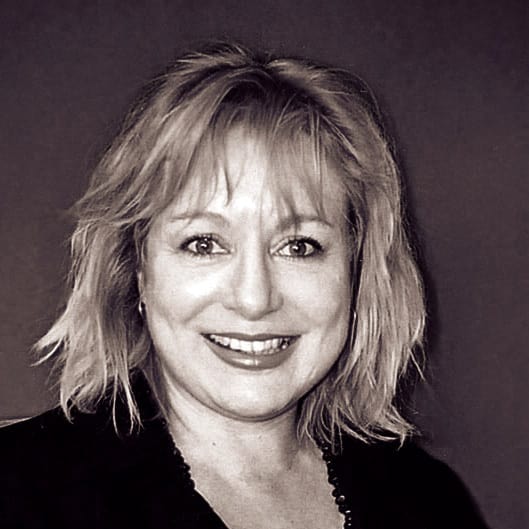
Muff Andersson
Muff Andersson was given a full amnesty for her role in terrorism from South Africa’s so-called “Truth and Reconciliation Commission.” Run by two clerics from the Church of England, Alex Boraine and Desmond Tutu, its purpose was to exonerate leftists and communists from any civil or criminal liability. On September 18, 1997, the South African Press Association (SAPA) published a terse statement:
Former Umkhonto weSizwe commander and journalist Muff Andersson has been granted amnesty for distributing weapons to self-defence units between 1991 and 1994, the Truth and Reconciliation Commission announced on Thursday.
In her amnesty application, Andersson, a former regional MK commander in Zimbabwe and later spokeswoman for the defence ministry, admitted to storing and distributing weaponry to MK structures.
The weapons had been ‘used for purposes of self-defence in communities which were under attack by the state and its surrogates’, she said.
About six minutes into this YouTube video, Muff Andersson explains that as a white woman she would be “more useful” in the underground, because the police had a “stereotype of suspecting black men”.
Muff Andersson also eventually became a “Wits lady,” earning a Ph.D. in African Literature. She now holds various academic appointments — jobs that would normally be closed to white men in South Africa.
I once joked on Twitter and Facebook that the Afrikaner’s demise has at least partially been caused by white English-speaking women with PhDs. Some users threatened to report me to the South African Human Rights Commission for “propagating hatred against people on the basis of race, culture and gender.”
Another prominent harridan, Melissa Steyn, is also at the University of the Witwatersrand. She wants to be South Africa’s foremost expert on “whiteness,” and to bolster the edifice of cultural-Marxist ideology aimed at white men. Despite her Afrikaans surname, Miss Steyn is English-speaking, and is a professor at the Wits Centre for Diversity Studies, where her research interests are listed as “Whiteness, Critical Whiteness Studies, Critical Diversity Studies, Postapartheid South Africa, Critical Diversity Literacy.”
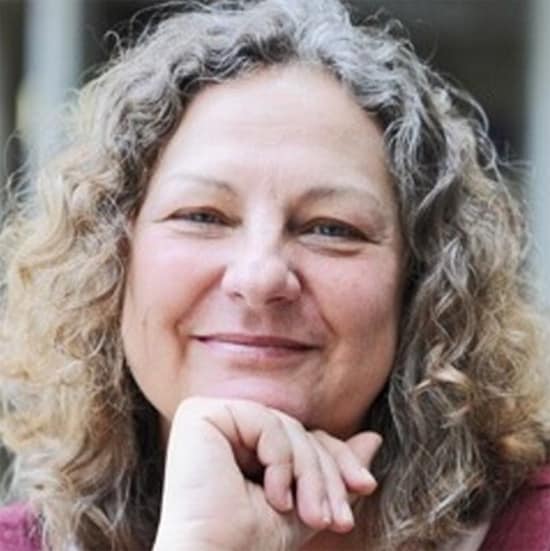
Melissa Steyn, Professor of Diversity and Whiteness Studies
What strikes me about these white Marxist women is their apparently unshakable belief that the black-male dominated, Africanized system we have is a vision of paradise. They never waver in parroting politically correct, feminist and anti-white jargon, even if they are physically attacked by a black robber.
A left-wing lawyer in Johannesburg, Tracey Lomax (she now calls herself “Lomax-Nixon” since she apparently has a husband with the surname of Nixon) at one time threatened to have me imprisoned for hate speech on account of my failure to prostrate myself before the ANC regime. She was also instrumental in assembling a high-powered team of about six lawyers from one of the biggest and most liberal law firms in Sandton against me and an Afrikaans singer Steve Hofmeyr, who was the victim of a left-wing campaign to ban him from all public facilities or venues. This would have ended his career as a singer.
She is married to a white man and has equally white children, but Tracey Lomax-Nixon professes to abhor white men. She tweets about “toxic white masculinity” as @LoudMouthedChic. In 2015, she was attacked, not by a “toxic white male” but rather by some non-toxic black males. She was threatened with (presumably non-toxic) rape and other violence by her black visitors:
I was held at gunpoint by a gang of armed men who took my family and I [sic] hostage for around two hours, while ransacking my house, repeatedly threatening me with rape, shooting at my husband at point-blank range, and tying up my daughter who was eight at the time.
She seems to think that she managed to talk them out of raping her. The title of her article was, “A violent attack made me confront my white privilege.” Here’s more:
The men were captured and I . . . joined many of our neighbors in enduring an identity parade, to identify them. . . .
The men were convicted and sentenced to life in prison. When I found out I was immediately assailed, not with relief, or a feeling of victory, but with a sense of sadness. It occurred to me that these men will never get a second chance. They have gone to jail for life. In South African prisons, that’s hardly a welcome sentence.
I think about the perverse humanity they demonstrated that night. I think about how what drew us together that night was a shared humanity; a spark of something we recognized and respected in one another despite the fact that we were meant to be adversaries.
The South African legal system is lenient. Although the vast majority of the public, both black and white, supports the death penalty, the liberal judges of the Constitutional Court abolished it soon after the ANC took over. Thus, even the most egregious crimes earn only a “life sentence,” which is meaningless in practice. Some murderers are out on the streets after five or ten years. Others are let out on bail for derisory amounts, equivalent to fifty or a hundred dollars, and commit even worse crimes while awaiting trial on the first set of charges.
One such case was the so-called “Tukkie rapist,” Samuel Tsietsi Msiza, who had already been arrested on a rape charge, was released on bail, and then raped and tried to stab to death a young, virgin Christian girl who was a student at the University of Pretoria. You can read about him here. The girl’s father sued the South African Police and the Justice Department for ten million rand, a claim that was settled out of court.
While liberals are enraged by old photographs of segregated beaches in 1960s South Africa, with “Whites Only” signs, they are aloof to our current horrors. They prefer to blame whites for black crime and cruelty. Like Mrs. Lomax-Nixon, they cannot see the decay under our corrupt, Afro-Marxist regime with its absurd leftist, anti-white clichés.
Until a few years ago, the typical South African Marxist witch was an English-speaking “Wits lady” or perhaps a product of the University of Cape Town. But more recently, as ambitious young women keen on entering mainstream journalism or getting university posts find themselves confronted with written and unwritten rules barring whites from jobs, even Afrikaans-speakers have started to take extremist positions against white men. One is Christi van der Westhuizen, a former journalist at the left-liberal Beeld in Johannesburg, and now “associate professor and senior researcher” at Nelson Mandela University, known in pre-revolutionary times as the University of Port Elizabeth.
Miss Van der Westhuizen, an outspoken lesbian and adversary of the white male, is on a constant campaign against white men. She speaks on the national Afrikaans radio station, RSG, about three to four times a week, where she denounces racism, whiteness, neo-liberal capitalism, the United States, colonialism and her own people: the Afrikaners.
She was born far from the urban citadels of Marxism, in a medium-sized town, Klerksdorp, where just about everybody speaks Afrikaans and goes to church. But big-city life has turned her into a more fanatical disciple of cultural-Marxist ideology than even a Ruth First or a limpet-mine-planting Shirley Gunn. She seems to blame Afrikaners for not miscegenating with blacks from the instant they set foot in Africa, and she denounces the odious “nationalism” they displayed after the horrors of the Anglo-Boer War of 1902 and the privations of the Great Depression in the 1930s.
In her view, white men controlled white women and forced them to maintain a racial purity they did not want. She likes to use the term “imagined community,” which was coined by a British Marxist, Benedict Anderson. To the ANC and the South African Communist Party, the notion that nations or ethnic groups are “imagined communities” and therefore do not exist, came as a godsend. It meant that South Africa’s ethnic and linguistic diversity could be ignored in favor of a Stalinist centralization of power.
Paradoxically, the Afrikaner nation is both the cause of black misfortune and a fictional entity which has never existed, except in the imagination of a few quasi-fascist, nationalist intellectuals.
The University of Potchefstroom, now known as the North-West University, used to be a conservative, Calvinist institution where dancing was prohibited on campus. Now it has a black president and prominent left-wing women advocating, among other things, the confiscation of white-owned land. One such radical law professor is Elmien du Plessis who thinks confiscation of white assets is both inevitable and desirable. Unlike even the ANC regime, which first wants to change the constitution to enable wholesale theft, Miss Du Plessis thinks the current constitution already permits this.
Another young woman with a Ph.D. plotting the demise of white civilization, language, culture and mores is Gerda Odendaal, She is a graduate of the University of Stellenbosch, and wants to replace the Afrikaans language with a “new norm” based on how the Colored people of the Western Cape speak, freely mixing in English words and expressions. It is not clear how one would write a Ph.D. thesis or describe a mathematical theorem in what she calls a “creative and ever-changing creole.”
Then there is Azille Coetzee who also studied in Stellenbosch. She has published a book, In my vel (In My Skin) (Tafelberg, 2019), in which she dissects her own identity as a feminist, renegade Afrikaner and grieves over the colossal burden of living with her white guilt.
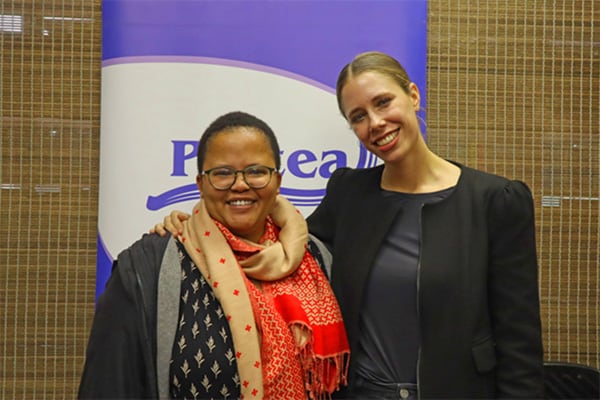
Azille Coetzee, on the right.
Women are often more conformist than men and follow the dominant ideology without asking too many questions. Gone are the days since Susanna Smit told her menfolk in the 1840s when Britain annexed the Natal province: “Rather barefoot over the Drakensberg mountains than to stand under British rule.”
A bronze monument to Susanna Smit is still to be found in those same forbidding mountains. It should inspire us to form bonds with women who do not hate men, especially white men, women with opinions and a will of their own, who aspire to freedom as we do. There are still many of them, even in Afro-Marxist South Africa.
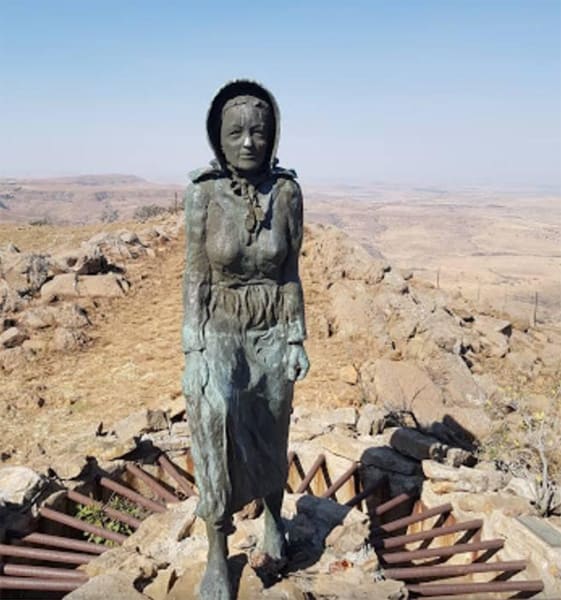
Monument to Susanna Smit, Drakensberg, South Africa, unveiled in 1977.
The Great White Marxist Feminist appears to be motivated both by opportunism and by the insecurity and dangers inherent in the multicultural society. Her fear of being raped or murdered seems to be transferred onto her fellow victim, the helpless white man next to her. The more violent South Africa becomes, the more desperately they denounce a white patriarchy that no longer exists.















